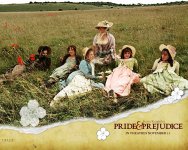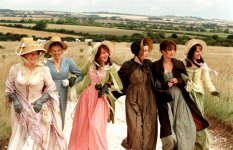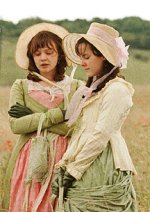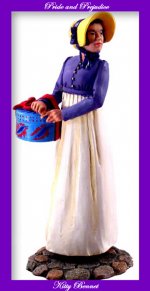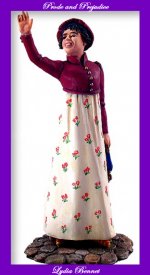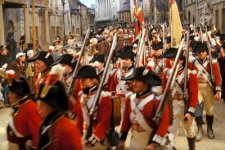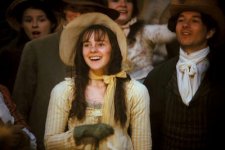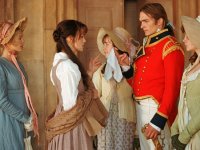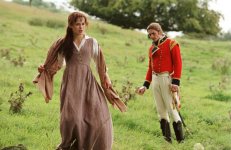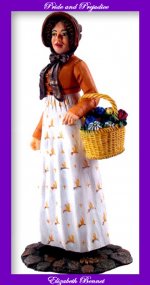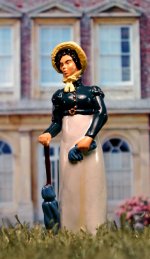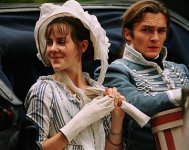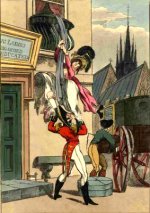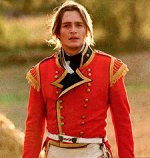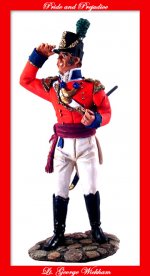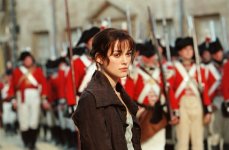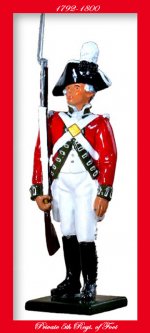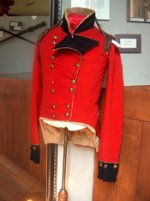PolarBear
Major
- Joined
- Feb 24, 2007
- Messages
- 6,706
WHAT’S WHAT WITH WICKHAM?
This is my second thread on Jane Austen and the Napoleonic Wars. As in my previous thread “Jane Austen, Napoleon and the Guards” I shall be looking at British fears of a French invasion and the response to provide adequate defense for such a possibility. Specifically I will be looking at Pride and Prejudice (1813) and one of its characters, George Wickham. For collectors, the characters of Pride and Prejudice make up W. Britains first releases in The Jane Austen Collection. I will be illustrating the thread with stills from the 2005 motion picture of the novel and some of the new WB figures.
Here is a poster from the 2005 film. It shows the female members of the Bennet family near the village of Longbourn, their country property. The mother and the 5 single daughters are shown here:
Rear (left to right): Mary, Elizabeth, Mrs. Bennet
Front (left to right) : Jane, Kitty, Lydia
The 2005 film version of P&P has been set in 1797. This is a year after Austen began writing the novel which was originally titled First Impressions. Most other film versions have been set closer to the 1813 date of its publication. The earlier setting accounts for differences in the style of the clothing worn by the characters in the film from those of the WB figures which are more typical of the first two decades of the 19th C. This applies to both civilian and military dress.
The plot of the novel centers around finding husbands who can adequately support each of the daughters. This was a necessity in England at the time because property and wealth could only be passed down from a father to a male relative.
This is my second thread on Jane Austen and the Napoleonic Wars. As in my previous thread “Jane Austen, Napoleon and the Guards” I shall be looking at British fears of a French invasion and the response to provide adequate defense for such a possibility. Specifically I will be looking at Pride and Prejudice (1813) and one of its characters, George Wickham. For collectors, the characters of Pride and Prejudice make up W. Britains first releases in The Jane Austen Collection. I will be illustrating the thread with stills from the 2005 motion picture of the novel and some of the new WB figures.
Here is a poster from the 2005 film. It shows the female members of the Bennet family near the village of Longbourn, their country property. The mother and the 5 single daughters are shown here:
Rear (left to right): Mary, Elizabeth, Mrs. Bennet
Front (left to right) : Jane, Kitty, Lydia
The 2005 film version of P&P has been set in 1797. This is a year after Austen began writing the novel which was originally titled First Impressions. Most other film versions have been set closer to the 1813 date of its publication. The earlier setting accounts for differences in the style of the clothing worn by the characters in the film from those of the WB figures which are more typical of the first two decades of the 19th C. This applies to both civilian and military dress.
The plot of the novel centers around finding husbands who can adequately support each of the daughters. This was a necessity in England at the time because property and wealth could only be passed down from a father to a male relative.


